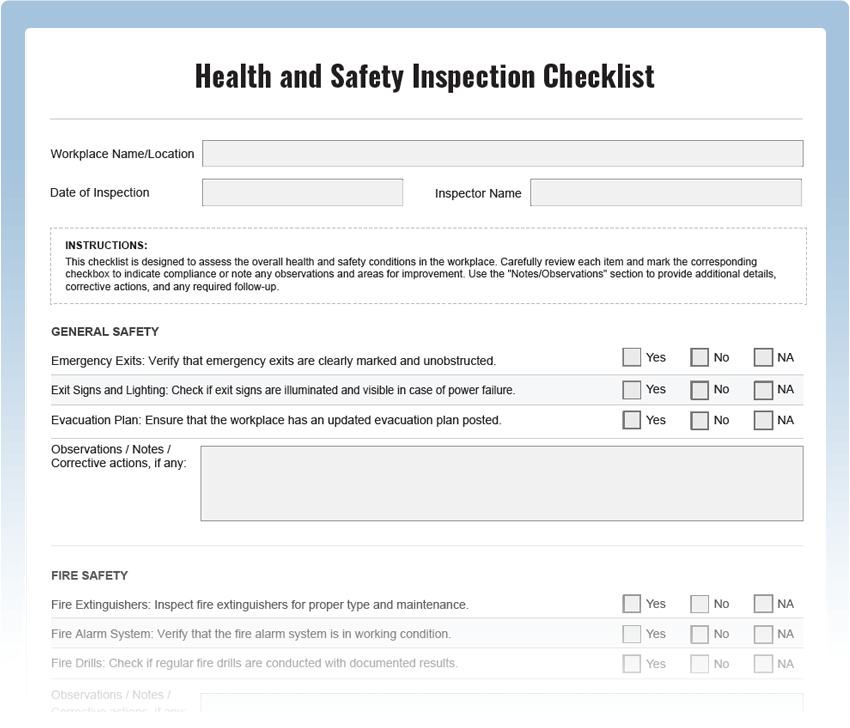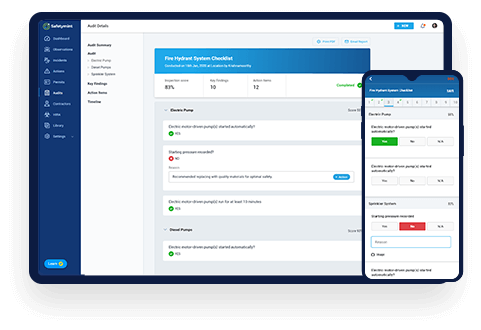Health and Safety Inspection Checklist
Prioritize the well-being of your workplace with our comprehensive Health and Safety Inspection Checklist. This free PDF template covers all critical aspects of health and safety, empowering safety officers and management to identify potential risks, conduct regular inspections, and create a safe and healthy working environment for all employees.
Digitize this Checklist on Safetymint
- Create unlimited, customized checklists
- Add Actions, with automated reminders
- Works seamlessly with or without internet
- Access via web browsers, mobile or tablets

What is a Health and Safety Inspection Checklist?
A Health and Safety Inspection Checklist is a systematic tool used to assess the health and safety conditions of workplaces. It includes a series of checkpoints designed to inspect various aspects of health and safety, such as hazard identification, emergency preparedness, first aid provisions, personal protective equipment (PPE), and more. Regular health and safety inspections are essential for preventing accidents, minimizing occupational health risks, and complying with health and safety regulations.
Key Areas to Inspect in a Health and Safety Inspection:
- Hazard Identification: Check for potential hazards in the workplace and assess risk mitigation measures.
- Emergency Preparedness: Verify the presence and accessibility of emergency exits and evacuation plans.
- First Aid Facilities: Assess the availability of first aid kits and trained first aid responders.
- Personal Protective Equipment: Ensure appropriate PPE is provided and used correctly by employees.
- Workstation Ergonomics: Evaluate ergonomic setups to prevent musculoskeletal issues.
- Chemical Safety: Review chemical handling procedures and safety data sheets (SDS).
- Fire Safety Measures: Inspect fire extinguishers, alarms, and fire evacuation procedures.
Common Health and Safety Inspection Findings:
Frequent issues found during health and safety inspections include:
- Inadequate PPE Usage: Employees not wearing or improperly using required PPE.
- Lack of Emergency Preparedness: Missing or poorly communicated emergency plans.
- Unsafe Workstations: Poor ergonomics leading to musculoskeletal disorders.
Health and Safety Inspection Best Practices:
- Scheduled Inspections: Conduct routine health and safety inspections at scheduled intervals.
- Safety Training: Provide comprehensive safety training for all employees.
- Incident Reporting: Encourage employees to report safety concerns and incidents.
- Safety Committee: Establish a safety committee to review and address safety matters.
- Continuous Improvement: Act on inspection findings to improve health and safety practices.




